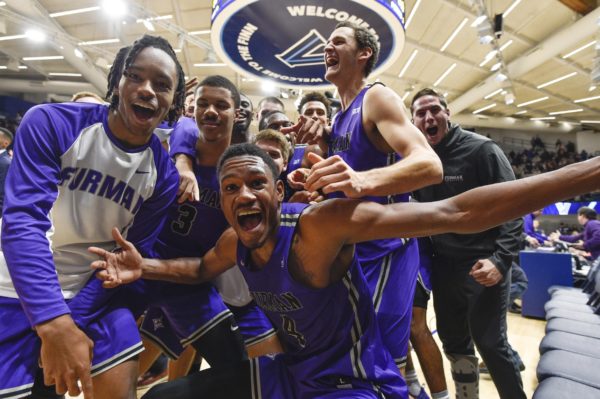Big East Reset: Analyzing Some of the Key Storylines Thus Far
Posted by Justin Kundrat on December 5th, 2018With nearly a month of Big East basketball already in the books, there has been no shortage of action in a non-conference schedule full of surprising upsets and gut-wrenching defeats. For those who haven’t been following very closely, you may have been surprised to see preseason bottom dweller Creighton nearly toppling #1 Gonzaga or the defending national champs dropping a home game to Furman. So as we inch closer to the holidays and conference play, below are some of the key Big East takeaways from the last few weeks.
- There isn’t a bad team in the conference. DePaul has made its name over the last decade as the Big East’s doormat, finishing among the bottom three in the standings in every season back to 2008. While the Blue Demons are still far from conference contention, Dave Leitao‘s group has raced off to an early 5-1 start that includes an overtime win over a solid Penn State club. The offseason delivered the two things DePaul needed most: shooting and size in the forms of transfers Jalen Coleman-Lands (Illinois) and Femi Olujobi (North Carolina A&T). Now, with a balance of size, experience and backcourt play, the Blue Demons’ offense finally has some cohesiveness. Expect this team to easily surpass its 4-14 conference win total from last season.
- Creighton’s offense didn’t regress as expected — rather, it might be just as good, if not better, than last season. This claim might seem far-fetched given that the Bluejays lost 60 percent of their scoring output, but they are right on pace at 1.16 points per possession eight games into the season. Interestingly, the blazing fast offense that attempted 29.4 percent of its shots in transition a season ago (seventh nationally) is now content to play in the half-court, with a middle-of-the-road tempo that ranks 155th in transition frequency. Neverthetheless, between sophomore guard Ty-Shon Alexander’s explosion onto the scene (the clear front-runner for the Big East’s most improved player) and the steady improvements of Damien Jefferson and Marcus Zegarowski, Greg McDermott’s team is the biggest surprise in the conference so far this season.
- Marquette and St. John’s have both quietly hummed along collecting wins outside the spotlight. Both teams are led by diminutive but electric scoring guards who have become must-watch TV this season. Markus Howard has improved his scoring average to 22.6 PPG despite also assuming point guard responsibilities, and with that, the Golden Eagles have already collected a pair of signature wins over Louisville and Kansas State. Shamorie Ponds has done more of the same, amassing 22.4 PPG to date and pacing the Red Storm to a 7-0 start. Both teams clearly have enough talent to win the conference this season, but there is no shortage of doubts after years of under-performance from both programs.
- Villanova has rebounded by finding comfort in a low-scoring tempo that allows it to focus on defense and crashing the glass. The Wildcats currently rank 341st in tempo with an offensive rebounding rate (38.4%, 13th nationally) not seen since 2012. A Thanksgiving weekend trip to Florida was kind to this young group, as Villanova knocked off Oklahoma State and Florida State, but the need for additional scoring depth behind Phil Booth and Eric Paschall is ever-present.
- The others (Xavier, Butler, Seton Hall, Providence, Georgetown) have played like classic middle of the road conference teams thus far. All five clubs have shown flashes of promise (Xavier took Auburn to overtime; Butler defeated Florida; Seton Hall won its Feast Week tournament), but there has been enough consistency to boot. Still, given the lack of a clear Big East front-runner this season, it would be no surprise to see any of these teams rise into the top tier by February. Picking which one is a roll of the dice.











































